When I started making my own ammo one of my shooting buddies asked if I was going to be reloading or handloading. I wasn’t aware there was a difference, but I’ve since learned that reloading is the process of putting together serviceable ammunition from components. Handloading moves beyond basic ammunition production. It involves fine-tuning for accuracy, consistency and power. This process involves meticulous attention to detail and advanced techniques that go well beyond the standard instructions found in reloading manuals.
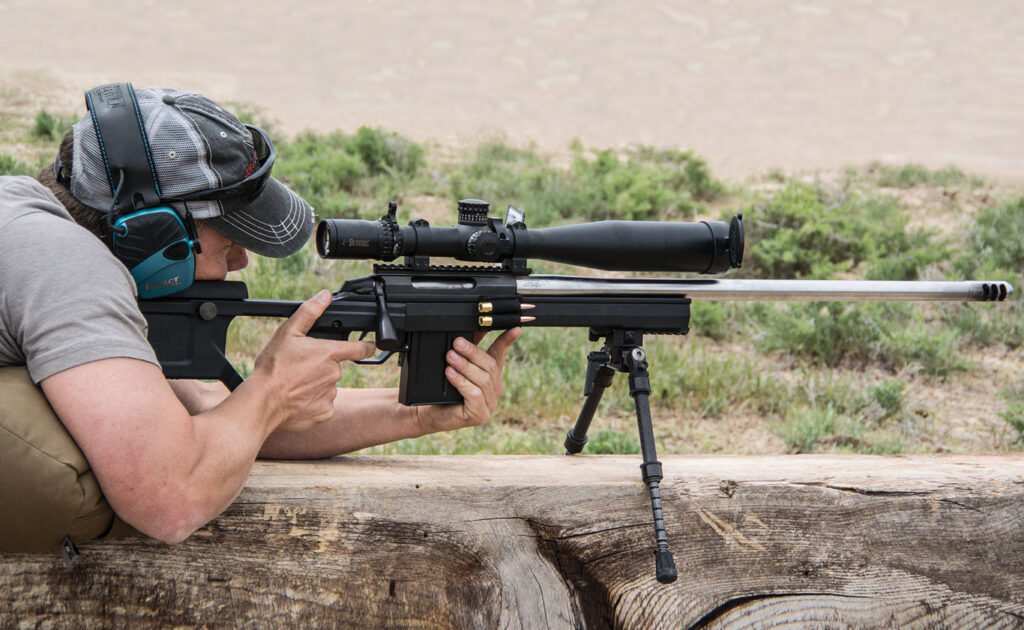
Many competitive shooters find success through handloading their own ammunition.
The goal in handloading is to produce ammunition with consistent ballistics. It generally starts with careful selection of components and includes extras steps in preparation. To meet special goals like ultimate precision, long-range accuracy or specific terminal performance for hunting, handloaders can fine-tune every component and variable of their ammunition. Achieving these goals requires a methodical approach, focusing on consistency and testing.
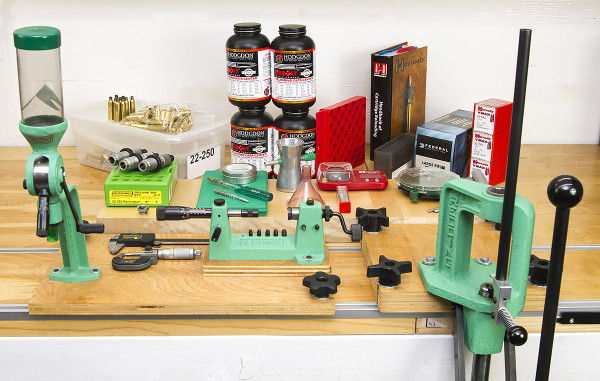
Handloaders will need the basic reloading tools but will find themselves adding specialty tools here and there.
For example, a handloader may take these extra steps beyond what a basic reloader would do:
- This is a heat treatment process which restores malleability by making the cartridge soft again. This reduces the risk of neck and shoulder splitting allowing cases to be reloaded many more times. It creates more consistent neck tension which improves bullet seating with the idea of improving accuracy.
- Neck turning. A specialized tool supports the inside of the case neck while a sharp, adjustable cutter shaves a thin layer off the outside of the neck. The goal is to remove high spots and create a uniformly thick neck all around.
- Ensuring all primer pockets are the same depth and width for consistent primer seating.
- Removing burs from the flash hole ensure uniform flame delivery to the powder.
- Weighing and sorting cases to ensure each has a consistent internal volume leading to more consistent pressure and velocity.
- Adjusting the seating depth of the bullet to control when the bullet impacts rifling. Experimenting with different bullet seating depths allows the reloader to find the best performance for a specific firearm.
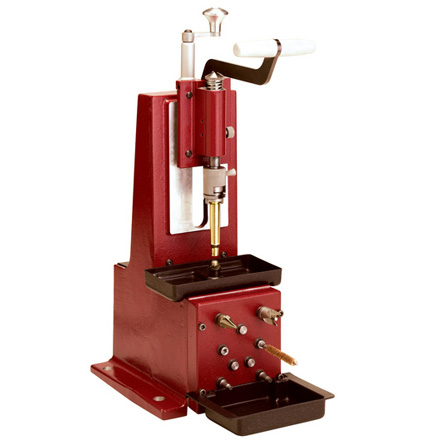
Combining essential case prep tools into one handy unit saves reloaders real estate on their benches and valuable time in the reloading process. The Hornady Lock-N-Load® Case Prep Center includes a power trimmer, chamfer/deburr tools, large and small primer pocket cleaners, neck brushes and pilots.
Reloaders can use a headspace gauge to measure a firearm’s chamber precisely. This allows for a custom “shoulder bump” during sizing minimizing case stretching and prolonging case life.
Over time, a barrel’s throat (the section just before the rifling) will wear. A precision handloader will track this change by measuring the jump to the rifling and adjusting the bullet seating depth accordingly to maintain accuracy.
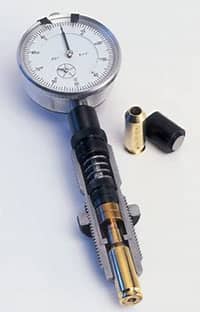
The bullet comparator is a crucial tool for reloaders ensuring consistent and precise measurements of bullet length.
To find a powder charge weight that produces consistent velocity, a handloader will typically load batches of cartridges with incrementally increasing powder charges and shoot them to find where shots cluster together on a single target.
Accuracy is affected by so many little things. Handloaders will typically sort brass by brand to control case wall thickness which affects bullet pull and crimping, especially for target loads.
When choosing bullets, handloaders will typically look for bullets with a high aerodynamic or ballistic coefficiency (BC). BC is a numerical measure of a bullet’s ability to cut through the air resulting in less drag, more retained velocity, less bullet drop and better resistance to crosswinds. Streamlined shapes like boat-tailed designs have higher values than short, fat or round-nosed bullets. Heavier bullets generally have higher BC values because they have greater sectional density meaning more mass behind the same cross-sectional area. Smaller diameter bullets often have higher values due to reduced drag and increased sectional density.
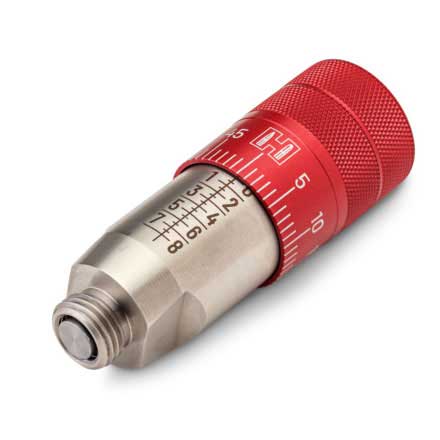
The Hornady click adjust micrometer offers a quick and easy way to achieve benchrest accuracy and consistency without the extra cost of another seating die.
Bullet seating is a critical part of the operation. Uniformly seated bullets are critical for making accurate long-range shots. To obtain the best results, a handloader will expand the case mouth just enough to accept the bullet without scraping it. Over-flaring can overwork the brass and lead to case splits. When crimping, use a taper crimp for flush-seated bullets to prevent damage to the case.
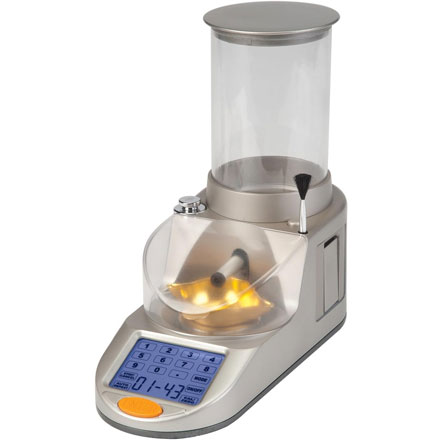
Digital powder scales such as this Lyman Gen 6 can ensure precise dispensing. It features an auto-repeat function that drops a precise charge each time the pan is reset.
It is important to pay close attention to the cartridge’s overall length as semi-automatic pistols are sensitive to length variation for reliable feeding. The bullet comparator is a crucial tool for reloaders ensuring consistent and precise measurements of bullet length. It measures from the bullet’s ogive to the base, providing a reliable reference point for seating depth. Bullet comparators come in various calibers and are compatible with different bullet types making them versatile for various reloading needs. They are designed to be attached to a caliper blade and use interchangeable inserts to measure from the bullet’s ogive ensuring repeatability and accuracy.
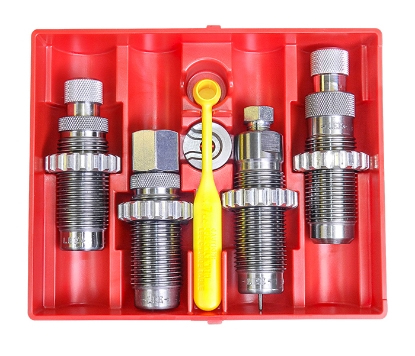
Die sets such as this 4-die set from Lee Precision can be adjusted to repeat the reloaders specifications on each cycle of the press.
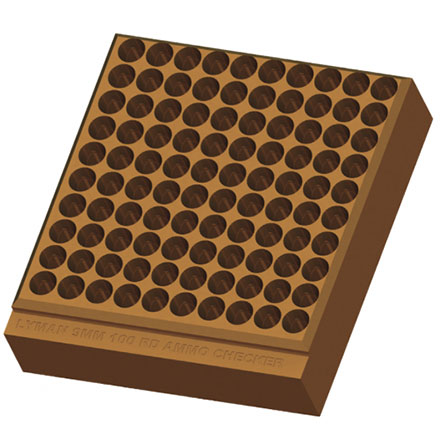
These Ammo Checkers are gauges that allow a reloader to quickly confirm that their ammunition will fit in their chamber. Just drop your loaded rounds in the ammo checker, and if the round fits into the gauge, it will fit in the gun’s chamber.
Record keeping is vital in a handloading operation. Some handloaders use a spreadsheet, others use a notebook to record details for each batch loaded. Tracking should include the name of the die set, plus brand and type of primer, powder and bullet used, measurements for OAL and cartridge base to Ogive.
Serious handloaders who are patient and methodical and are generally rewarded by high-scoring targets and trophies.








